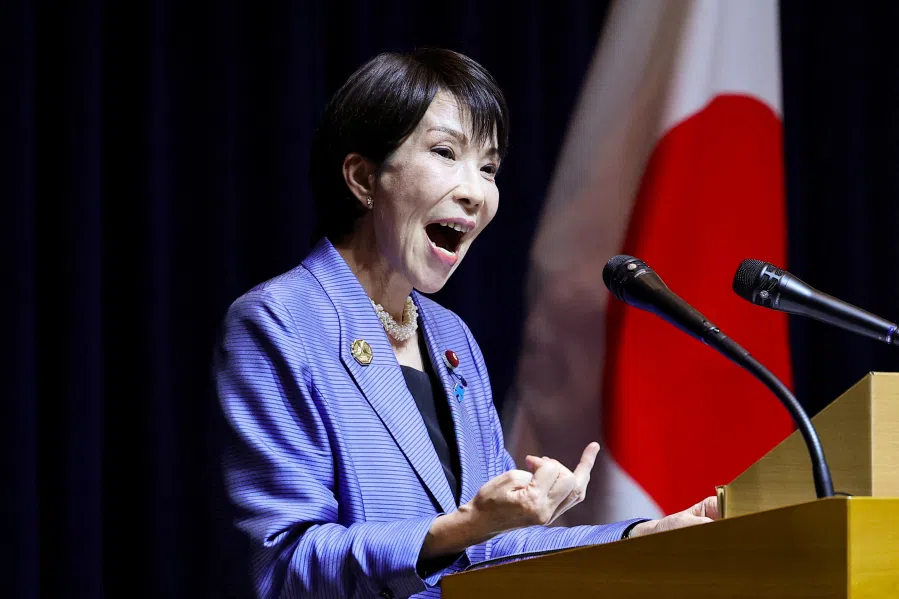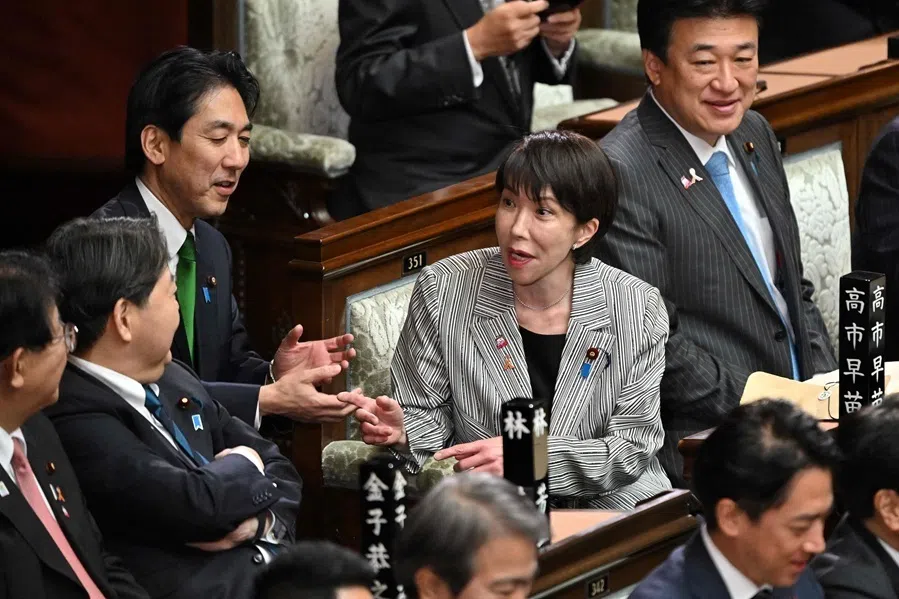Gulf states roll out the welcome mat for Chinese tourists as focus shifts from oil
To reduce their dependence on oil, Gulf states are diversifying their economy, with a focus on tourism. In 2024, the Middle East welcomed 95 million arrivals, 32% more than 2019, making it the world’s strongest-performing region. Chinese visitors, particularly business travellers seeking opportunities in the region, have helped fuel this growth.

(By Caixin journalists Feng Yiming and Han Wei)
As the sun rises over Saadiyat Island, the Louvre Abu Dhabi is bathed in a mesmerising glow. Inside, visitors escape the searing desert heat, enjoying cool temperatures as sunlight filters through the 180-metre dome. The star-shaped perforations in its eight layers of stainless steel and aluminium create the iconic “rain of light” effect within the museum.
Built on the sea, this architectural masterpiece is the Arab world’s first international museum and France’s largest cultural project beyond its shores. It stands as a testament to Abu Dhabi’s ambitious efforts to diversify its economy, shifting from oil dependence to a focus on art, culture and tourism.
Amid a global green push, Middle Eastern countries like the United Arab Emirates (UAE) and Saudi Arabia have shifted away from oil dependency in recent years, focusing on diversification with tourism as a key element. Between 2018 and 2023, the region invested US$15.2 billion in 254 greenfield tourism projects abroad. Meanwhile, it received US$6.8 billion foreign investments in 109 tourism projects, according to UN Tourism.
In 2024, international tourism rebounded to pre-pandemic levels, after the worst crisis in the sector’s history. The Middle East welcomed 95 million arrivals, 32% more than 2019, making it the world’s strongest-performing region.
Chinese visitors, particularly business travellers seeking opportunities in the region, have helped fuel this growth.
“Since February 2023, the number of Chinese visitors to the Middle East for conferences, exhibitions and business trips has grown significantly compared with 2019,” said Zhao Lijin, chairman of the International Elite Club, a nonprofit organisation promoting China-global business exchanges. “No other region has experienced such growth in its business travel market,” he added.

China’s slow post-pandemic recovery and intense domestic competition have persuaded more businesses to seek opportunities abroad. The Middle East, with its strategic geopolitical position and favourable policies, has become an increasingly attractive destination for Chinese investors.
Data from China’s online travel service platform Qunar showed flights to the Middle East have surged. The UAE emerged as the top destination in December 2024 with a 62% year-on-year rise in bookings. The most popular cities — Abu Dhabi and Dubai — saw increases of 72% and 61%, respectively. Saudi Arabia followed close behind.
Chinese airlines, including China Eastern Airlines, China Southern Airlines, Hainan Airlines and Cathay Pacific Airways, have added routes linking Chinese cities with Middle Eastern destinations.
A China Eastern representative told Caixin the airline’s new Middle East routes, launched in the second half of 2023 and 2024, connect Dubai with Chinese cities such as Shanghai, Qingdao, Kunming and Xi’an. In 2024, round-trip flights to the region were more than double the previous year.
“Abu Dhabi aims to become the cultural and artistic centre of the Arab world.” — Head, Falcon Eyes Travel
UAE’s tourism boom
The Louvre Abu Dhabi, which opened in 2017, spans 24,000 square metres (258,334 square feet), with 6,000 square metres dedicated to its permanent galleries and more than 600 masterpieces. It is the largest museum on the Arabian Peninsula.
The museum was established through a 2007 agreement between the UAE capital and France, with Abu Dhabi paying 400 million euros (US$416 million) for the right to use the Louvre name for 30 years.
“Abu Dhabi aims to become the cultural and artistic centre of the Arab world,” said the head of a local travel agency Falcon Eyes Travel. The city is developing a dedicated cultural district on Saadiyat Island, with several art galleries and museums under construction, she added.

Abu Dhabi’s Department of Culture and Tourism unveiled its “Tourism Strategy 2030” in April 2024, aiming to raise visitor numbers from 24 million in 2023 to 39.3 million by 2030. The strategy intends to boost tourism’s contribution to the UAE’s GDP from 49 billion dirhams (US$13.3 billion) in 2023 to 90 billion dirhams by 2030. From January to October, the emirate’s hotels hosted 4.8 million visitors, with international arrivals rising 26% year-on-year. Cultural and arts venues saw 3.9 million visitors, up 21% from the previous year.
Expatriates make up nearly 90% of Abu Dhabi’s population, with the city home to workers from India, Pakistan and Egypt.
... today, 70% of the UAE’s GDP comes from non-oil sectors.
“They welcome people from all over the world to do business here,” a Chinese enterprise employee who has lived in Abu Dhabi for years told Caixin. The UAE’s liberal policies, strong infrastructure and inclusive society make it attractive for Chinese companies exploring international opportunities. Many multinational firms set up branches in the UAE, using it as a gateway into Europe and Africa, she said.
While Middle Eastern countries like the UAE built their economies around oil, in recent years, industries such as tourism and finance have surged, and today, 70% of the UAE’s GDP comes from non-oil sectors.
Dubai, the UAE’s most populous city, aims to double its economy by 2033 and join the ranks of the world’s top three cities. Tourism and exhibitions are central to this goal. Known for architectural marvels such as the Burj Al Arab, Palm Jumeirah and the Burj Khalifa, Dubai is the first stop for Chinese travellers to the region.

on 30 January 2025. (Fadel Senna/AFP)
The Dubai World Trade Centre hosted 301 exhibitions and events in 2023, contributing 10.53 billion dirhams, or 58% of the local economy. Major events planned for 2025 include the Dubai World of Coffee Expo and Dubai International Horse Fair. Meanwhile, duty-free shopping continues to thrive, with sales reaching a record 7.9 billion dirhams in 2024.
Other UAE emirates — the country is made up of seven — are also opening their doors to global travellers, especially from China. Raki Phillips, head of Ras Al Khaimah’s Tourism Development Authority, told Caixin that since partnering with Chinese travel platform Ctrip in June 2024, more than 4,000 Chinese tourists have visited the emirate. In 2024, Chinese visitors increased by 16%, making China one of Ras Al Khaimah’s top ten source countries.
These initiatives underscore Saudi Arabia’s commitment to diversifying its economy, elevating its international image and positioning itself as a leading leisure destination.
Saudi ambitions
On 11 December, Saudi Arabia officially won the right to host the 2034 FIFA World Cup, marking a key milestone in its efforts to enhance its global profile and showcase its tourism potential. This is one of a series of events the Kingdom is to host, which include the 2027 AFC Asian Cup, the 2029 Winter Asian Games, and the 2030 World Expo. These initiatives underscore Saudi Arabia’s commitment to diversifying its economy, elevating its international image and positioning itself as a leading leisure destination.
Saudi Arabia’s exhibition sector is also growing rapidly. The Big 5 Construct Saudi, the country’s largest construction industry event, attracts thousands of participants and covers a wide range of sectors, including building materials, engineering machinery and air conditioning. The February 2024 event alone drew more than 64,000 attendees.
Chinese companies were heavily represented at the event, with one hall almost entirely occupied by Chinese exhibitors, according to Zhao. “Saudi Arabia has huge ambitions and aims to become the leader of the Middle East,” he said.
As part of its “Vision 2030” strategy, launched in 2016, Saudi Arabia is working to diversify its economy and reduce dependence on oil. It took a significant step in 2019 by granting tourist visas to citizens of 49 countries, including China. This opening up has spurred opportunities in sectors such as tourism, construction, retail, logistics and technology.

Chinese entrepreneurs interviewed by Caixin said they see opportunities in offering advanced services such as AI, cloud computing and renewable energy to Saudi businesses and government agencies. With the growing presence of Chinese enterprises in the country, services such as cloud computing, telecommunications and financial products are also becoming increasingly important.
Saudi Arabian Minister of Tourism Ahmed Al-Khateeb told Caixin that the country aims to attract 55 million international visitors by 2030, and have the industry account for 10% of its GDP and 10% of its employment. To achieve this, Saudi Arabia plans to invest more than US$600 billion in the next decade, focusing on new airlines, resorts, hotels and shopping centres.
In the first seven months of 2024, Saudi Arabia welcomed 17.5 million visitors, a 73% increase from the same period in 2019. Tourism revenue surged by 207%. In June 2024, China and Saudi Arabia signed an agreement granting Chinese travellers easier access to the kingdom, as part of Saudi Arabia’s goal of attracting 5 million Chinese tourists by 2030.
“We’ve only just begun opening up, and the market is still in its early stages. China is a key market for us,” said John Pagano, CEO of Red Sea Global, a Saudi developer behind a major tourism project on the Red Sea coast. Given Saudi Arabia’s rich history and culture, it should be a top destination for Chinese tourists, he added.
Zhou Xiaotong, Zhao Xuan, Sun Yanran and Du Zhihang contributed to the story.
This article was first published by Caixin Global as “In Depth: Gulf States Roll Out the Welcome Mat for Chinese Tourists as Focus Shifts From Oil”. Caixin Global is one of the most respected sources for macroeconomic, financial and business news and information about China.





